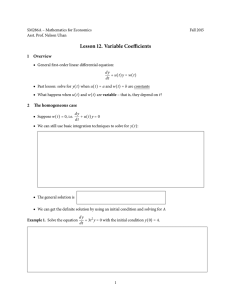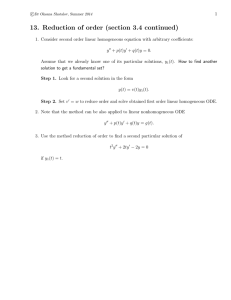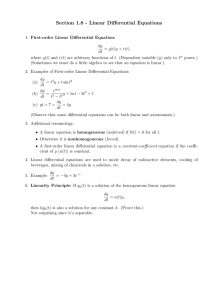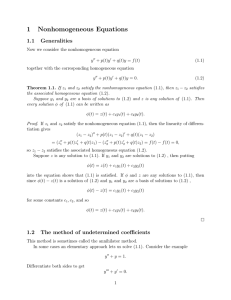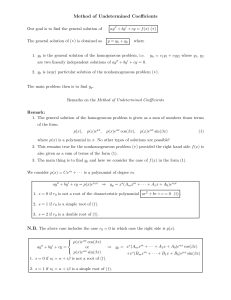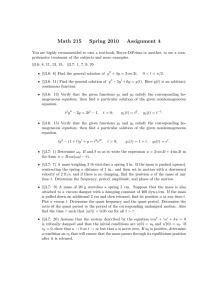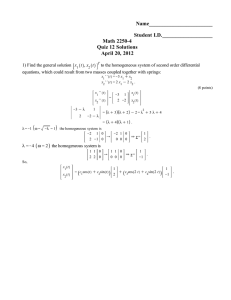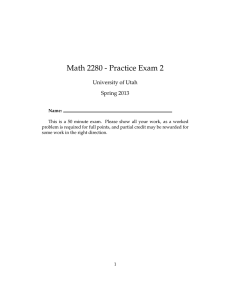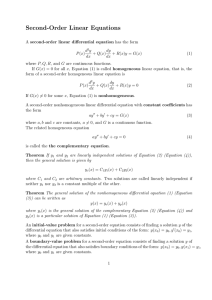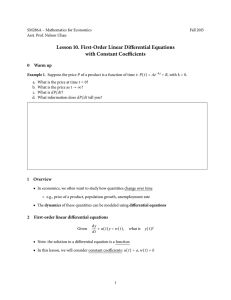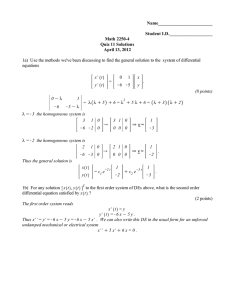Section 3.6 Variation of Parameters
advertisement
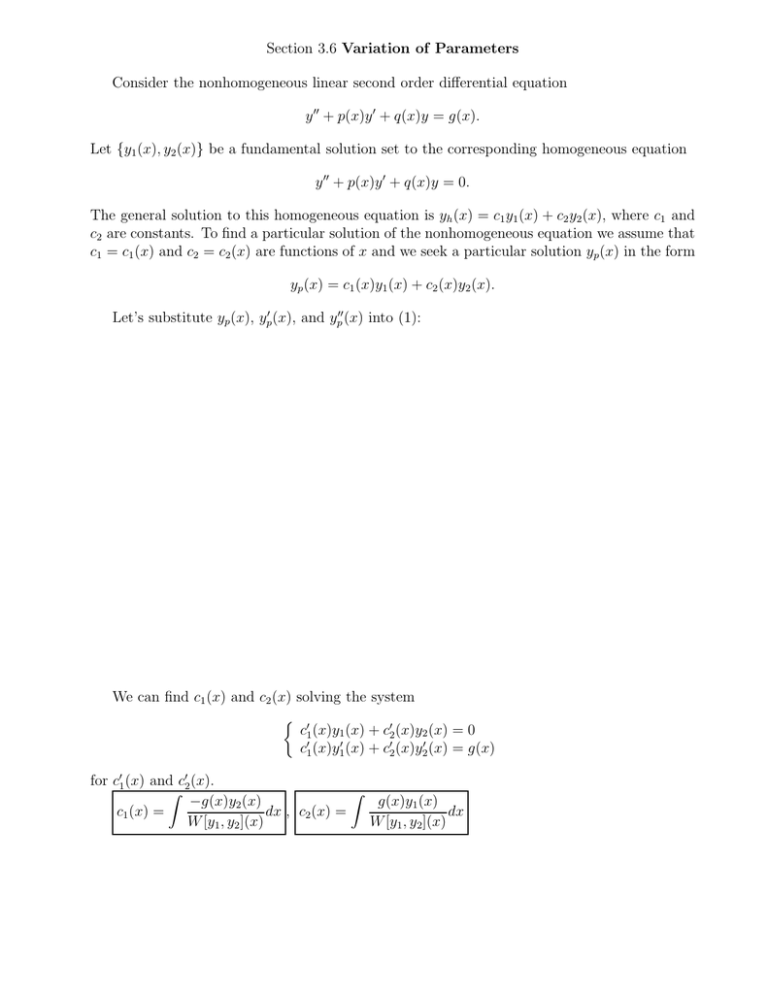
Section 3.6 Variation of Parameters
Consider the nonhomogeneous linear second order differential equation
y ′′ + p(x)y ′ + q(x)y = g(x).
Let {y1 (x), y2 (x)} be a fundamental solution set to the corresponding homogeneous equation
y ′′ + p(x)y ′ + q(x)y = 0.
The general solution to this homogeneous equation is yh (x) = c1 y1 (x) + c2 y2 (x), where c1 and
c2 are constants. To find a particular solution of the nonhomogeneous equation we assume that
c1 = c1 (x) and c2 = c2 (x) are functions of x and we seek a particular solution yp (x) in the form
yp (x) = c1 (x)y1 (x) + c2 (x)y2 (x).
Let’s substitute yp (x), yp′ (x), and yp′′ (x) into (1):
We can find c1 (x) and c2 (x) solving the system
′
c1 (x)y1 (x) + c′2 (x)y2 (x) = 0
c′1 (x)y1′ (x) + c′2 (x)y2′ (x) = g(x)
for c′1 (x) and c′2 (x).
Z
Z
−g(x)y2 (x)
g(x)y1 (x)
c1 (x) =
dx , c2 (x) =
dx
W [y1, y2 ](x)
W [y1 , y2](x)
Example. Find the general solution to the equation y ′′ + y =
1
.
sin x
